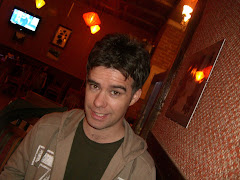
Business New Europe
Jason Corcoran in Aktau
The windswept dustbowl of Zhanaozen in the Mangistau oblast in western Kazakhstan can be a sweltering and inhospitable place in summer. Stretching out as far as a squinted eye can see is an army of nodding donkey oil pumps scattered across the plains.
Employees of state-controlled KazMunaiGaz seem to have little to distract them but work at these production facilities, where temperatures range from 40 degrees in summer to minus 30 degrees in winter. Company officials say workers are compensated for toiling in such desolate conditions and are even allowed to take subsidised breaks at the president's summer resort at Kenderlie on the Caspian coast.
Such is the nature of the oil boom that is sweeping over the steppes of Kazakhstan, creating a vast new industry and breathing new life into old ones.
Oil is pumped through a pipeline to the seaport Aktau, 190 kilometres away on the Caspian coast, which is the departure point for over 8m tonnes of oil and 1.5m tonnes of solid cargo. A legacy of the Soviet era, Aktau was built in the 1960s to produce uranium and plutonium for the military, and the city was a secret and closed to outsiders until the demise of the Soviet Union.
Today, the chemical factories are closed and the nuclear power station no longer functions. But the port is now the centre for the development of the offshore oil industry and a transport hub for ships crisscrossing the Caspian from Azerbaijan, Iran and Russia, exporting oil and wheat, and importing cars and machinery for the oilfields. Downtown, cranes intersect the skyline and the old Soviet apartment blocks have been spruced up and daubed with bright blue paint.
Facilities at Aktau are being upgraded to make it into a major industrial centre and hub for exports, but it doesn't have all the capacity for the anticipated Caspian oil boom.
A second port to bolster the region's oil export potential is being built at Kuryk, located 70 kilometres south of Aktau. Once this is completed, oil from the giant Kashagan field would then flow from Aktau to Kuryk for shipment across the sea to Baku and the newly completed Baku-Tbilisi-Ceyhan (BTC) pipeline.
Friends in the region
State-controlled KazMunaiGaz, which is building fleets of tankers to shuttle oil across the Caspian, is not just deepening the cooperation on energy and other resources with Azerbaijan. President Nursultan Nazarbayev entertained the Russian leader Vladimir Putin in Kenderlie last month in between trilateral energy talks involving their countries and the new Turkmenistan leader, President Gurbanguly Berdymukhammedov. Their get-together coincided with a summit taking place in Poland aimed at reducing energy dependence on Russia, which got nowhere.
The three CIS leaders, on the other hand, agreed to construct a pipeline to transport Turkmen natural gas to Russia along the Caspian coastline via Kazakhstan, a deal that analysts say eclipses EU plans for a trans-Caspian pipeline bypassing Russia.
China on its eastern frontier has not been forgotten either. The Chinese CITIC Group acquired the Kazakhstan oil assets of Canada's Nations Energy Company, for almost $2bn at the end of last year.
The deal allows CITC to develop the Karazhanbas oil and gas field until 2020. It has proven reserves of more than 340m barrels of oil and produces more than 50,000 barrels a day. A Sino-Kazakh oil pipeline, extending 962 kilometres from Atasu in central Kazakhstan to the Alataw Pass on the border with China, has also been completed.
Much of Kazakhstan's wealth is still controlled by relatives, friends and close associates of Nazarbayev, who doesn't have a fantastic track record of managing the country's natural resources. His son-in-law Timur Kulibayev is a senior executive of the parent company controlling KazMunaiGaz. And US banker James Giffin was indicted in 2003 for paying bribes to two top Kazakh officials in exchange for the signing of huge contracts for the sale of Kazakh oil and natural gas to Mobil Oil, Amoco, Texaco and Phillips Petroleum.
However, the country is opening up and KazMunaiGaz E&P, which is 60% owned by the national oil company, was floated last October with shares listed on the Kazakhstan and London stock exchanges.
Analysts say the appointment of independent directors had eased some worries about corporate governance at the company. Paul Manduca, the former European head of Deutsche Asset Management, former JP Morgan investment banker Christopher Cox and oil industry veteran Eddie Walshe were drafted in prior to the listing.
Manduca, who popped up in Astana last month at the company's annual meeting, admits that KazMunaiGaz E&P struggled to reach IFRS accounting standards demanded for the listing, but has since made strides to improve its corporate governance.
"Financial reporting is critical for shareholders to have confidence and even companies in the UK have struggled, so it goes to shows how far KazMunaiGaz has travelled," he says.
www.businessneweurope.eu




No comments:
Post a Comment